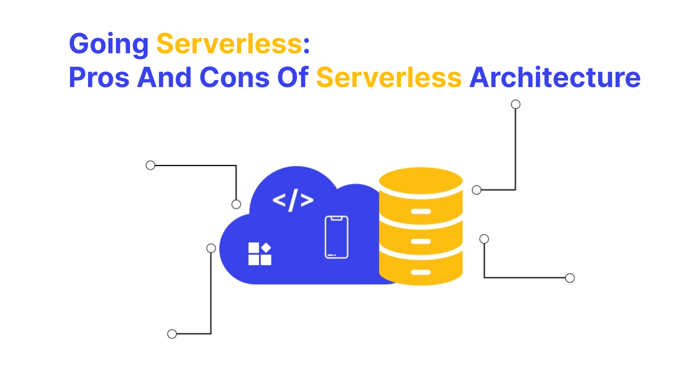Learn about tips for developing high-quality code while catching up with tight deadlines.
In a fast-paced environment, the importance of developing high-quality code cannot be overstated. Technical experts and software engineers face numerous challenges in their quest to deliver top-notch code while meeting tight deadlines. This article aims to provide valuable insights and tips to help these professionals navigate the complexities of developing high-quality code in a fast-paced environment.
One of the primary reasons why developing high-quality code is crucial is that it directly impacts the overall performance and reliability of software applications. Code that is poorly written or lacks proper documentation can lead to critical issues down the line, such as bugs, crashes, and security vulnerabilities.
In this article, will explore various concepts such as agile principles, code review and feedback, automating testing and deployment, refactoring and optimizing code, defining quality standards, and more. By implementing these concepts, technical experts and software engineers can enhance their coding practices and deliver exceptional results even in demanding environments.
Balancing Code Quality and Speed
While the pressure to deliver quickly can be intense, compromising on code quality can lead to long-term issues and technical debt. Here are some tips to help you make informed coding decisions without sacrificing quality:
- Plan and prioritize: Take the time to plan your tasks and prioritize them based on their importance and impact. This will ensure that you allocate sufficient time for critical tasks that require more attention to detail.
- Follow coding standards: Adhering to established coding standards and best practices can significantly improve code quality. Consistent and clean code is easier to understand, maintain, and debug.
- Use design patterns: Design patterns provide proven solutions to common software development problems. By leveraging these patterns, you can write cleaner, more modular code that is easier to test and modify.
- Automate repetitive tasks: Identify repetitive tasks in your development process and automate them. Automation not only saves time but also reduces the chances of introducing errors during manual execution.
- Write unit tests: Unit tests are essential for verifying the correctness of your code. By writing tests alongside your code, you can catch bugs early, ensure better overall quality, and have confidence in making changes without breaking existing functionality.
To maintain productivity while ensuring high-quality code in a fast-paced environment, consider implementing the following strategies:
- Continuous integration: Integrate your code frequently with the main branch to detect integration issues early on. This practice encourages collaboration, reduces conflicts, and helps maintain a stable codebase.
- Pair programming: Pairing up with another developer can enhance code quality by promoting knowledge sharing, brainstorming solutions, and catching errors before they become problematic.
- Code reviews: Conduct regular code reviews to get feedback from peers. Code reviews not only improve the overall quality of the codebase but also provide an opportunity for knowledge transfer and learning from others' experiences.
Remember, balancing code quality and speed is an ongoing process. By following these tips and adopting a proactive mindset towards quality, you can deliver high-quality code efficiently in a fast-paced environment.
Agile Principles for Developing High-Quality Code
Adopting agile principles can greatly contribute to the development of high-quality code. These principles emphasize collaboration, adaptability, and iterative development, allowing teams to respond quickly to changing requirements and deliver valuable software in shorter timeframes.
Agile methodologies, such as Scrum or Kanban, provide frameworks that enable software teams to effectively manage their work and maintain code quality. Here are some ways in which agile principles can be applied in a fast-paced coding environment:
- Sprint Planning: Break down work into smaller, manageable tasks and prioritize them based on business value. This allows developers to focus on delivering high-quality code incrementally.
- Continuous Integration: Integrate code changes frequently into a shared repository, enabling early detection of integration issues and reducing the risk of introducing bugs.
- Iterative Development: Develop software in short iterations or sprints, obtaining feedback regularly from stakeholders. This approach ensures that any necessary changes or improvements can be addressed promptly.
Adopting an agile approach offers several benefits for developing high-quality code in a fast-paced environment:
- Flexibility: Agile methodologies allow teams to respond quickly to changing requirements and priorities. This flexibility ensures that code quality is not compromised even when working under tight deadlines.
- Collaboration: Agile promotes cross-functional collaboration among team members, encouraging regular communication and knowledge sharing. This collaboration contributes to better code quality through collective code ownership and peer reviews.
- Early Feedback: Agile practices encourage frequent feedback from stakeholders, enabling teams to identify and address potential issues early in the development process. This results in higher-quality code as problems are caught and resolved sooner.
To effectively implement agile practices and improve code quality in a fast-paced coding environment, consider the following tips:
- Continuous Learning: Encourage a culture of continuous learning and improvement within the team. Regularly review and reflect on the development process to identify areas for enhancement.
- Automated Testing: Implement automated testing frameworks to ensure code quality throughout development iterations. Automated tests provide quick feedback on any regressions or issues that may arise.
- Regular Retrospectives: Conduct regular retrospectives to identify what worked well and what can be improved in terms of code quality and development speed. Use these insights to refine your agile practices over time.
By applying agile principles, teams can strike a balance between speed and code quality, ultimately delivering high-quality software in a fast-paced environment.
Code Review and Feedback
Code review plays a crucial role in maintaining code quality. It ensures that the code meets the required standards and is free from any potential issues or bugs. Here are some best practices for conducting effective code reviews in a fast-paced environment:
- Establish clear guidelines: Define clear and specific guidelines for code review, outlining the expectations for code quality, readability, and performance. Having well-defined standards helps streamline the review process and ensures consistency across the team.
- Regular reviews: Conduct regular code reviews to catch issues early on and prevent them from impacting the overall project timeline. Instead of waiting until the end of a sprint or release cycle, aim for continuous integration and make code reviews an ongoing practice.
- Assign dedicated reviewers: Assign dedicated reviewers who have expertise in the relevant areas of the codebase. This helps ensure that reviews are thorough and insightful, providing valuable feedback to improve the quality of the code.
- Focus on clarity and readability: Pay attention to the clarity and readability of the code during the review process. Encourage developers to write self-explanatory code with meaningful variable names, proper indentation, and comments where necessary. This not only enhances collaboration but also makes future maintenance easier.
- Provide constructive feedback: When providing feedback, focus on constructive criticism rather than pointing out mistakes. Offer suggestions for improvement and explain why certain changes are necessary. This helps foster a positive culture of learning and growth within the development team.
- Utilize automation tools: Leverage automation tools to streamline the code review process. These tools can help identify potential issues such as syntax errors, unused variables, or security vulnerabilities automatically.
By utilizing feedback from code reviews effectively, you can continuously improve both code quality and speed in a fast-paced environment. Encourage open communication among team members to discuss feedback, address concerns, and implement necessary changes promptly.
Remember, code review is not just about finding errors; it is an opportunity to learn, share knowledge, and enhance collaboration within the development team.
Automating Testing and Deployment
Automating testing and deployment processes can greatly enhance code quality and speed. Here are some key benefits, tools, techniques, and tips to help you integrate automation effectively into your workflow:
- Improved Efficiency: Automating testing and deployment eliminates the need for manual intervention, saving time and effort. It allows you to run tests automatically, identify issues early on, and deploy code quickly.
- Consistent Testing: Automation ensures that tests are performed consistently across different environments, reducing the chances of human errors and improving overall code quality.
- Faster Feedback Loop: Automated testing provides immediate feedback on code changes, enabling developers to identify and rectify issues promptly.
- Continuous Integration and Deployment: Automation facilitates continuous integration (CI) and continuous deployment (CD), enabling faster delivery of high-quality code.
Tools and Techniques for Automation
- Continuous Integration Tools: Popular CI tools like Jenkins, CircleCI, and Travis CI provide robust frameworks for automating build, test, and deployment processes.
- Version Control Systems: Leveraging version control systems like Git allows for seamless integration with CI/CD pipelines, enabling automated testing upon every commit or merge.
- Containerization Technologies: Containerization platforms like Docker enable the creation of portable environments that can be easily replicated for testing purposes.
- Infrastructure as Code (IaC): Tools such as Terraform or Ansible automate the provisioning of infrastructure resources required for testing, ensuring consistency across environments.
Tips for Integrating Automation
- Start Small: Begin by automating repetitive, time-consuming tasks that have a significant impact on code quality or deployment speed. Gradually expand automation to cover other areas of your workflow.
- Collaborate with QA Team: Involve your QA team in designing automated tests to ensure comprehensive coverage. Collaborate with them to identify critical areas that require automation and establish shared test repositories.
- Establish Test Suites: Create well-structured test suites that cover different types of tests, including unit tests, integration tests, and end-to-end tests. This ensures a comprehensive and efficient testing process.
- Monitor and Maintain Automation: Regularly review and update your automated tests to keep them relevant and effective. Monitor the results of your automated tests and promptly address any failures or issues that arise.
Integrating automation into your testing and deployment processes can significantly enhance code quality and speed in a fast-paced environment.
Refactoring and Optimizing Your Code
It is crucial to continuously refactor and optimize your code to ensure improved quality and speed. Refactoring involves restructuring your code without changing its functionality, while optimization focuses on improving the performance of your code. By regularly performing these tasks, you can maintain clean and efficient code that meets the demands of a fast-paced development workflow.
Refactoring and optimization play a significant role in enhancing the quality and speed of your code. Here's why they are important:
- Code Maintainability: Refactoring helps simplify complex code, making it easier to understand and modify. It eliminates duplicated or unnecessary code, improves code organization, and enhances readability. This makes it more manageable for developers to maintain and update the codebase efficiently.
- Bug Detection and Prevention: During the refactoring process, you may uncover hidden bugs or potential issues in your code. By addressing these problems early on, you can prevent them from causing significant disruptions down the line. Additionally, refactoring allows you to write cleaner code that is less prone to bugs in the first place.
- Performance Improvement: Optimization focuses on identifying bottlenecks, inefficient algorithms, or resource-intensive operations in your code. By optimizing critical sections of your codebase, you can significantly improve its performance and response time. This is especially important in a fast-paced environment where every millisecond counts.
Here are some techniques you can use to identify and address code inefficiencies in a fast-paced environment:
- Code Profiling: Use profiling tools to identify performance bottlenecks in your code. These tools provide insights into which parts of your code are consuming the most resources or taking the longest time to execute.
- Simplify Complex Algorithms: Break down complex algorithms into smaller, more manageable functions or methods. This not only improves code readability but also allows for easier identification and resolution of performance issues.
- Eliminate Code Duplication: Duplicate code not only makes your codebase harder to maintain but also increases the chances of introducing bugs. Refactor duplicated code into reusable functions or classes to improve code quality and reduce redundancy.
- Use Efficient Data Structures: Choose the appropriate data structures that align with the requirements of your code. Using efficient data structures can significantly improve the performance of your algorithms and operations.
To ensure that your code remains clean and efficient throughout a fast-paced development cycle, consider the following tips:
- Continuous Integration: Implement a continuous integration (CI) system that automatically runs tests and checks for code quality issues. This helps catch any regressions or potential problems early on.
- Regular Code Reviews: Encourage regular code reviews within your team to catch any coding inefficiencies or quality issues. By having fresh eyes review your code, you can identify areas for improvement and ensure adherence to best practices.
- Documentation: Maintain clear and up-to-date documentation for your codebase. This ensures that developers can easily understand the purpose and usage of different components, which aids in identifying areas that may require refactoring or optimization.
- Refactor as You Go: Instead of waiting for a dedicated refactoring phase, aim to refactor small sections of your code during regular development tasks. This approach allows you to continuously improve the quality and efficiency of your code without disrupting the development flow.
By consistently implementing these techniques and following these tips, you can keep your codebase clean, efficient, and ready to tackle the challenges of a fast-paced environment.
Defining Quality Standards
In a fast-paced coding environment, defining quality standards is crucial to ensure the development of high-quality code. These standards serve as guidelines that help maintain consistency, readability, and reliability throughout the codebase. By establishing clear quality standards, software engineers can improve collaboration, reduce errors, and enhance the overall efficiency of the development process.
Here are some tips for establishing and communicating quality standards in a fast-paced environment:
- Collaborative Approach: Involve all stakeholders, including developers, testers, project managers, and clients, in defining quality standards. This collaborative approach ensures that everyone has a shared understanding of the expectations for code quality.
- Clear Documentation: Document the defined quality standards to provide a reference point for all team members. This documentation should include coding conventions, naming conventions, design patterns, and best practices to follow during development.
- Consistent Code Reviews: Conduct regular code reviews to enforce the defined quality standards. Code reviews allow developers to provide feedback on each other's code, identify potential issues or improvements, and ensure adherence to the established guidelines.
- Automated Testing: Implement automated testing processes to validate that the code meets the defined quality standards. Automated tests can be used to check for code functionality, performance, security vulnerabilities, and adherence to coding conventions.
- Continuous Integration: Utilize continuous integration practices to integrate code changes frequently and detect any violations of the defined quality standards early on. Continuous integration tools can automatically run tests and perform static code analysis to identify potential issues before they become more difficult to fix.
Conclusion
In this article, we have explored the importance of developing high-quality code in a fast-paced environment and discussed various strategies and tips to achieve this goal.
To summarize, some key points to remember are:
- Balancing code quality and speed is crucial in a fast-paced environment. It requires making informed coding decisions without compromising on quality and finding ways to maintain productivity while ensuring high-quality code.
- Adopting agile principles can greatly benefit software development in a fast-paced coding environment. Agile practices enable teams to iteratively develop and deliver high-quality software in shorter cycles.
- Code review plays a vital role in maintaining code quality. Conducting effective code reviews and utilizing feedback from them can help identify and address potential issues before they become significant problems.
- Automating testing and deployment processes can significantly improve code quality and speed. By integrating automation into the development workflow, teams can ensure consistent testing, faster deployments, and more reliable software.
- Regular refactoring and optimization are essential for improving both code quality and speed. By identifying and addressing inefficiencies in the code, teams can maintain clean and efficient codebase.
- Defining clear quality standards is important to ensure consistent coding practices. Establishing these standards, communicating them effectively, and enforcing them through code reviews and testing processes can help maintain high-quality code.
In conclusion, developing high-quality code in a fast-paced environment is challenging but achievable. By implementing the tips provided in this article, software engineers and technical experts can improve their coding practices, enhance productivity, and deliver reliable software products.
Akava would love to help your organization adapt, evolve and innovate your modernization initiatives. If you’re looking to discuss, strategize or implement any of these processes, reach out to [email protected] and reference this post.





